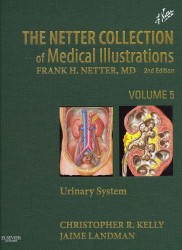Full Description
This book intends to be a contribution to the "varieties of capitalism" paradigm. The theoretical background is Weber 's theory of legitimacy. Was communism ever "legitimate"? What kind of legitimacy claims were made in the transition from communism to capitalism? Central Europe was closer to the Western "liberal" model. Russia built capitalism in a patrimonial way. China followed its own unique way; some called it "socialism with Chinese characteristics". Putin experiments with an innovation for post-communist capitalism. He confronts the "oligarchs" and reallocates property from those who challenge his political authority to old and new loyal ones. This book asks to what extent such forms can serve as generic models for post-communist capitalism?
Contents
Preface
List of Figures, Tables and Boxes
1 Introduction
2 Legitimacy under Communism and Post-communism: Theoretical Background
2.1 When Is a Rule 'Illegitimate '?
2.2 The Three Ideal Types of Legitimate Authority (and the Fourth)
2.3 Various Types of Traditional Authority
3 Varieties of Communism
3.1 Introductory Remarks
3.2 What Is/Was Communism? The Political Economy of the Classical System
3.3 Systems of Domination under Various Types of Communism
3.4 Reforming the Communist Economy
3.5 The Governance of State-Owned Enterprises
3.6 Stratification Regimes under Various Communist Formations
4 Reinterpretation of Inequalities and Rent-Seeking in Advanced Market Economie
4.1 Profits versus Rents
4.2 Changing and New Forms of Rents
4.3 Institutional Consequences of Rent
4.4 Class Reproduction through the Accumulation of Human and Cultural Capital
4.5 The Counter-Revolution of Nation States in the Name of More Equality
5 The Divergent Pathways Out of Communism
5.1 Introductory Comments: Distinguishing Three Pathways to Capitalisms
5.2 The Liberal Model
5.3 The Patrimonial Model
5.4 Market Socialism or Capitalism from Below?
5.5 The Structure of Post-communist Societies during the First Phases of Transformation
6 Consolidation and Partial Re-convergence of Post-communist Pathways?
6.1 Eastern European Liberal Democracies: Successes and Crises, 2000--2010
6.2 The New Legitimacy and a New Political Economy: Illiberal Managed Democracy and Prebendalism
6.3 The Ideology of Post-communist Traditionalism
6.4 Liberal-Democratic Ways to Capitalism in Eastern Europe: The Emergence of Prebendalism?
6.5 Is China on the Road to Putinism?
6.6 Social Structure in Post-communist Societies in or on the Way to Prebendalism
7 Conclusions: Is Putinism a Model for Post-communism?
Bibliography
Name Index
Subject Index








